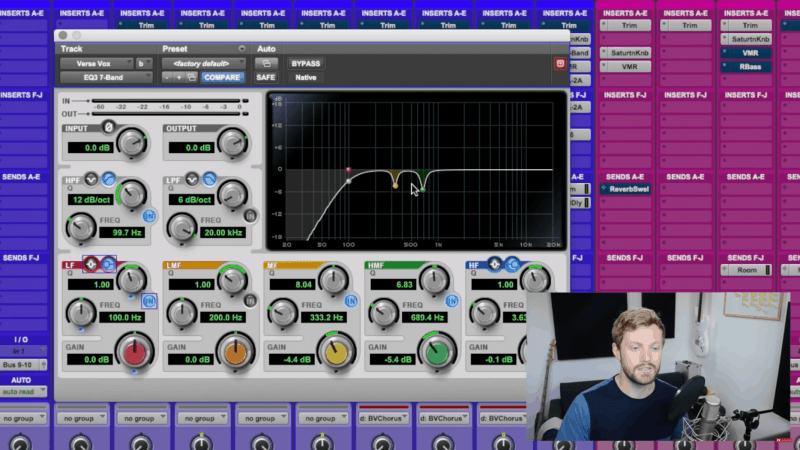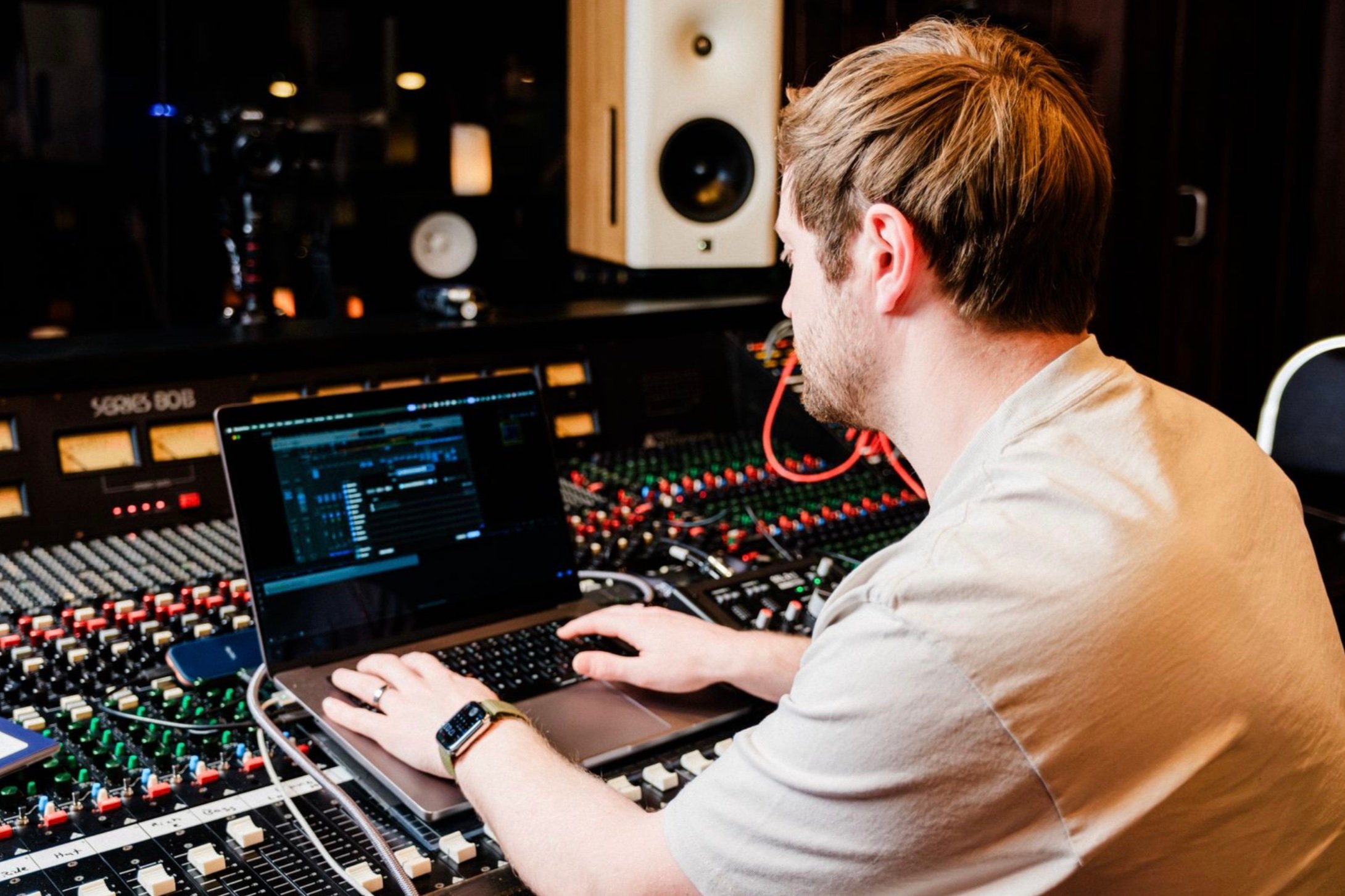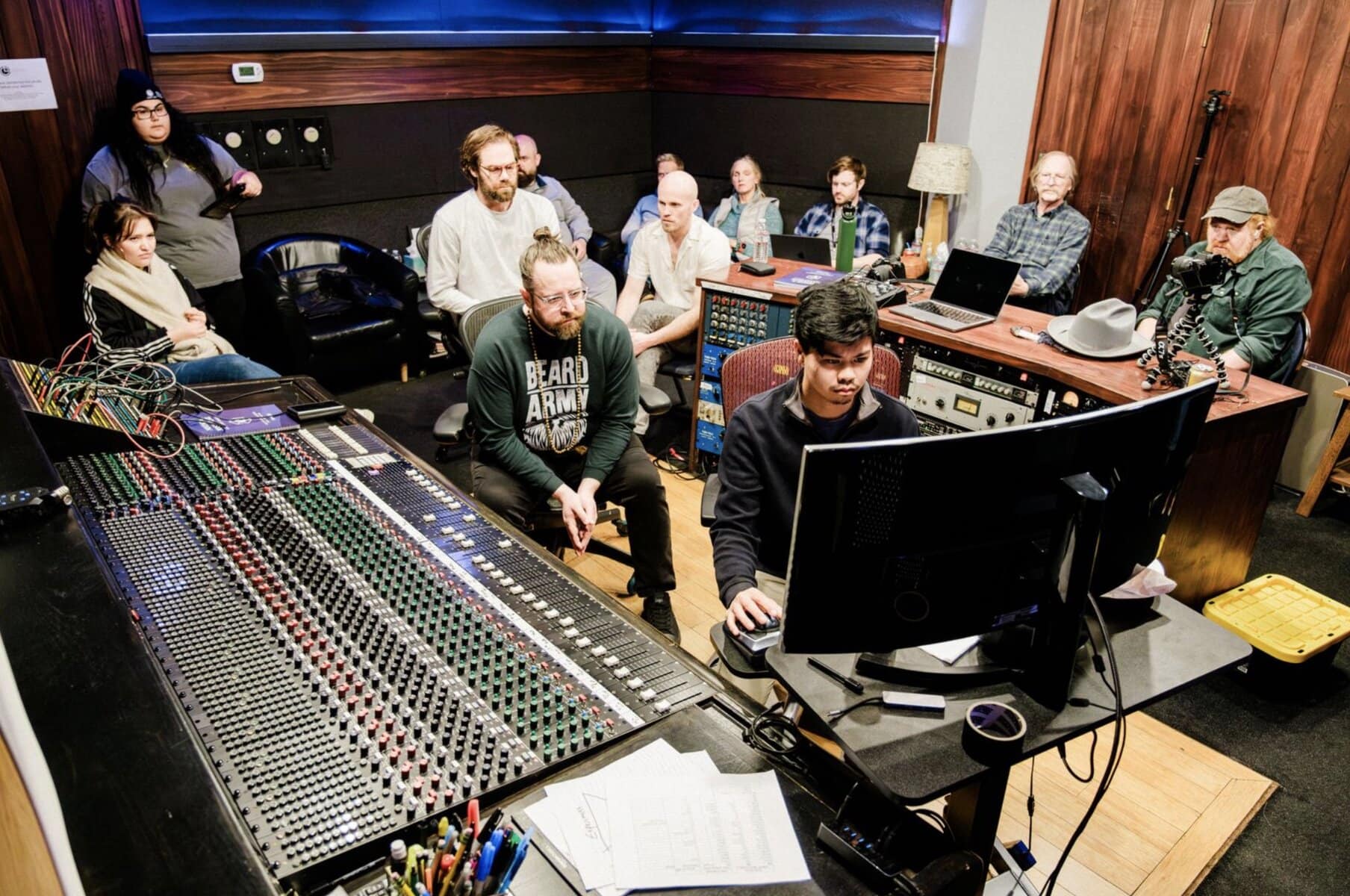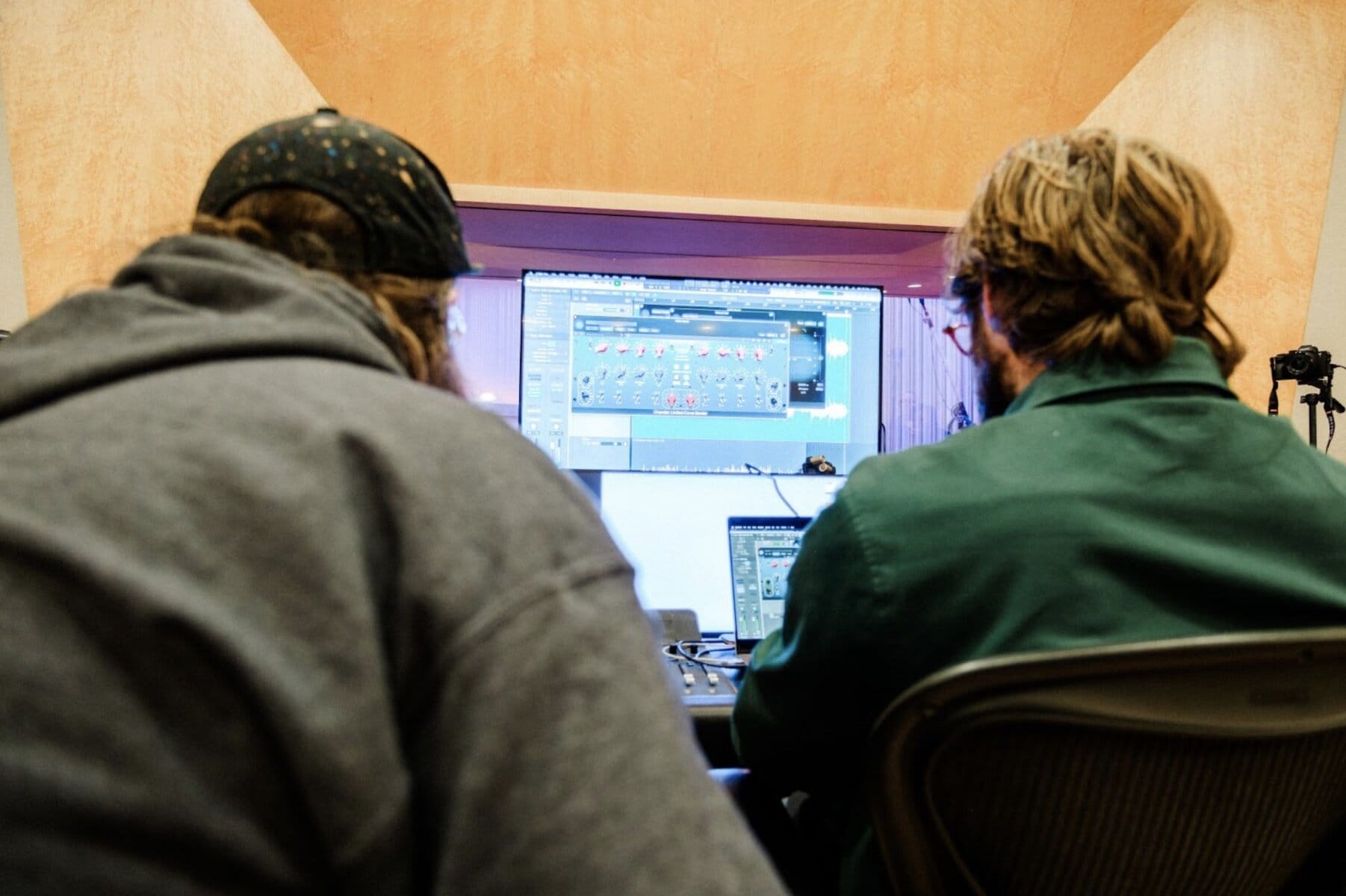Ah, the age old question….
Should EQ come before or after compression?
Let me tell you… it DOES NOT matter.
This is a very small detail that is completely subjective. It’s up to the mixer.
But of course, I still have my own opinion and system.
In fact, I don’t put EQ before OR after compression. I do something entirely different.
In part 6 of the One Month EQ Challenge, I’m going to show you my favorite place for EQ in the plugin chain.
Follow this system, and not only will your EQ compliment your compression…
Your use of EQ will also improve.
I’m going to finally answer the age old question of, EQ before or after compression? I actually suggest something completely different: neither of those, I say. All will be revealed in a second.
First of all, before I answer that question, I just want to point out that it’s really not that important in the grand scheme of things. If you’re worrying too much about where you place EQ in your plugin chain, then you’re getting caught up on the wrong things because it really doesn’t matter. It makes a very, very small difference, and you’re much better focusing your energy on other areas like the fundamentals of EQ, those 4 key approaches that I covered in chapter 1. So don’t worry about it too much.
Having said that, I do have my own opinion of where it works best, and this is going to be very different to other engineers. It’s a purely subjective thing.
Generally with mixing, people agree on the outcome, but they disagree on methods. People can agree on what a good mix sounds like and what they want to achieve in their mix, but they go about achieving that in completely different ways.
So I’m going to give you my opinion, I’m going to give you the way that I do it; you can decide whether you agree with my thought process or if you want to try a different way, and that’s fine. I’m going to demonstrate the various ways at the end of this video so that you can actually hear how small of a difference there is between each way. There is a difference. You will be able to hear it, but it’s very small.
First of all, what’s my opinion? Well, I think that you should use EQ before and after compression. Not before, not after – both. And there’s a reason for that.
In chapter 1, I spoke about the different approaches to EQ. Just to recap, Approach #1 was to remove unpleasant elements, remove nasty stuff. Approach #2 was to exaggerate the good stuff. And then of course, we had Approach #3, which was create space, and #4, which was make things sound different.
But those first two approaches (remove the nasty elements and then enhance the pleasing element) can be split into two different EQ plugins. What I like to do is actually remove the nasty elements, then compress, and then enhance the pleasing elements. And I’ll still do a bit more cutting as well. I like to call it surgical EQ and tonal EQ: surgical EQ before compression, tonal EQ after compression.
In our first EQ, which I call surgical EQ, we’re usually removing those room resonances. So it’s narrow cuts, surgically removing the nasty stuff. Once we’ve done that, we’ve removed the low end noise, we’ve tightened it up a bit on the low end, and we’ve removed those room resonances, the vocal sounds a lot cleaner. Now we’ve got what I would call a clean vocal that we can compress.
After applying some compression what we’ve got is a cleaner vocal, because we’ve removed the resonances and the really ugly stuff, and we’ve got a vocal that’s a bit more dynamically consistent. This is where I feel it’s time to start working with the tone.
So after this I’ve got my tonal EQ, which is generally enhancing the pleasing elements. I’m doing that by boosting the high mids and the upper treble area, and I’m also doing that by removing some of the lows just to clear up the top end a bit. So that’s my tonal EQ where I’m enhancing those pleasing elements.
Now, if I put this before the compressor, my reasoning is that I’m boosting this frequency quite a lot, so the compressor is going to be enhancing that boost, really. I am using another compressor afterwards, so I’m kind of going EQ, compressor, EQ, compressor, and that’s just the way that I like to work. I like to use a faster compressor, then tonal EQ, and then I use a slightly slower compressor.
But the important distinction here is that my opinion is that you remove all the nasty stuff, then you use compression – one compressor is fine; you don’t have to use more than one – and then you do your tonal adjustments. Because you’ve got a nice clean vocal, you compress it, and then it’s time to start adjusting it to taste. You’re not fixing anything at this point. You’ve already fixed the ugly stuff. At this point, you’re just shaping it to perfection.
Having said that, changing the order of the plugins results in very, very small difference. So there’s no right answer. In my opinion, apply EQ before and after compression. Whether you agree with that or not, it’s up to you, but that’s how I like to work.
Give that a try. I think it really helps you to stick to those 4 approaches, because you’re splitting EQ into two different plugins: you’re removing the nasty stuff and then you’re enhancing the good stuff. In terms of workflow, I think it really helps you stick to those approaches. In terms of sound and tone, there’s not much difference.













